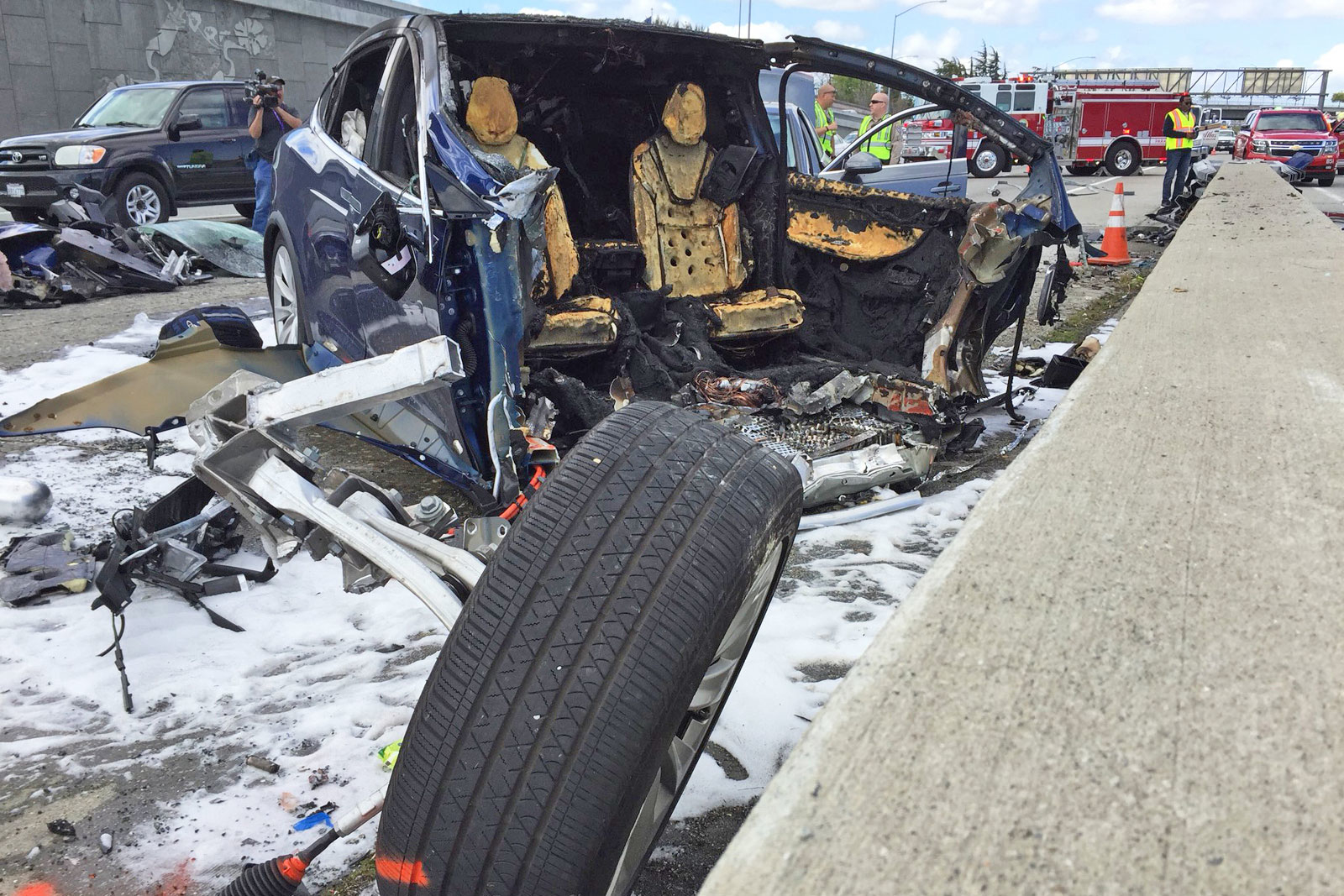Tesla continues to insist on the driver’s fault in the March accident

Two weeks after the Tesla accident, which caused the death of its owner, the proceedings in this case are still ongoing. Let me remind you that the accident occurred when the Autopilot system was turned on, which the owner of the car most likely hoped for. Tesla conducted its own investigation, its representatives are convinced that it was the driver, Walter Huang, who was to blame.
But the relatives of the deceased do not agree with this. They hired a new lawyer to try to prove their point. The accident occurred on March 23, the deceased was just on the way to work. On April 4, at Geektimes , information was published that the cause of the accident may be incorrect recognition of the road marking by the autopilot.
To confirm this, the brother of the deceased decided to drive the same car as the one that previously belonged to his brother, along the section of the highway where the accident occurred. He says that he has repeatedly heard Walter's complaints that an electric car with autopilot turned on behaves strangely on a certain section of Highway 101 in Mountain View, California, USA. He even drove his car to the dealership, where he asked to solve the problem with the autopilot.
')
There could not do anything, as well as reproduce the problem. Tesla claims that the application is not in the center - registration of this information does not exist.
Another similar test was conducted by a journalist who has exactly the same car - the Tesla Model S. The test results were the same - as the autopilot approaches the fence, it starts to perform an unusual maneuver, shifting to the left from its own lane. After that, the driver corrected the situation by putting his hands on the steering wheel and removing the car from the autopilot. The problem in the layout, as it turned out, is that it is almost invisible, in the part where the edge of the roadway is indicated.
The car "sees" the next marking relating to the parallel carriageway, and deviates in that direction.
The company Tesla, as already mentioned, insists on the driver's guilt, arguing (by the way, reasonably) that the instructions indicate the need to keep your hands on the wheel. According to the company, the accident happened on a clear day, the driver had about 5 seconds to respond to the problem. Tesla experts concluded that the Tesla owner simply did not pay enough attention to the road.
According to the brother of the deceased, this is most likely not the case, since he always kept his hands on the wheel and carefully watched the road.
According to the family of the deceased driver, Tesla accuses him of what has happened in order to divert attention from the problems of the electric vehicle autopilot system. The company made the following statement about this: “According to the family, Mr. Hyang understood that Autopilot was not an ideal system, in particular, he told them that the autopilot system worked incorrectly in a certain location. The accident happened on a clear day, the visibility was very good, which means that Mr. Hyang did not pay enough attention to the road, despite the fact that the car gave several warning signals. ”
The company also says that various Tesla models have driven through a stretch of road in question many thousands of times, and nothing like this has happened to anyone else.
Recently it became known that the National Transportation Safety Board of the United States suspended Tesla from investigating this case. The fact is that participation in the process helped the company to be always aware of what is happening. But the results are still not entirely clear, and the commission would like to keep things confidential, and not tell everyone about it, including the company that is the developer of the car destroyed in the accident.
Council action does not mean that the company is considered the culprit. "Providing the public with incomplete information about what is happening often leads to rumors and incorrect assumptions about the likely cause of the accident," the organization said in a statement.
Over the past few weeks, the relationship between Tesla and the regulator has become much cooler. This can be seen from regularly appearing cues on both sides. On the Council’s statement about the “incomplete information”, Tesla representatives noted that the regulator himself often talks about certain stages of the investigation, which cannot be considered complete, and then blames others.
Source: https://habr.com/ru/post/371429/
All Articles